Dell XPS 13 Review
by Brett Howse on February 19, 2015 9:00 AM EST- Posted in
- Laptops
- Dell
- Ultrabook
- Broadwell-U
- XPS 13
Gaming Performance
Normally on an Ultrabook we would not dedicate an entire page to gaming performance, because the integrated GPUs do not perform very well on our gaming tests. However, with this being our first example of Broadwell-U, it is a good time to revisit this and see how the new graphics capabilities of Broadwell compare to the Haswell processors.
With the Core i5-5200U in both of the XPS 13s that we received, we have 24 execution units, compared to only 20 on Haswell-U. In addition, the 14nm process should help with throttling. The FHD model (1920x1080) arrived with a two 2GB memory modules and the QHD+ version came with 2 x 4GB.
First, let's look at the synthetic benchmarks, starting with 3DMark and then moving on to GFXBench.
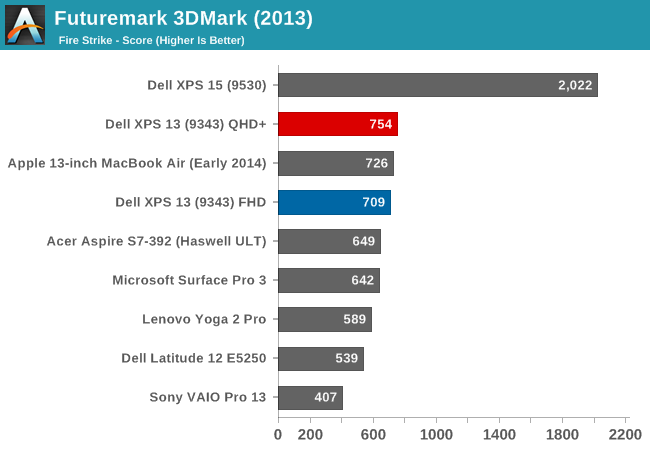
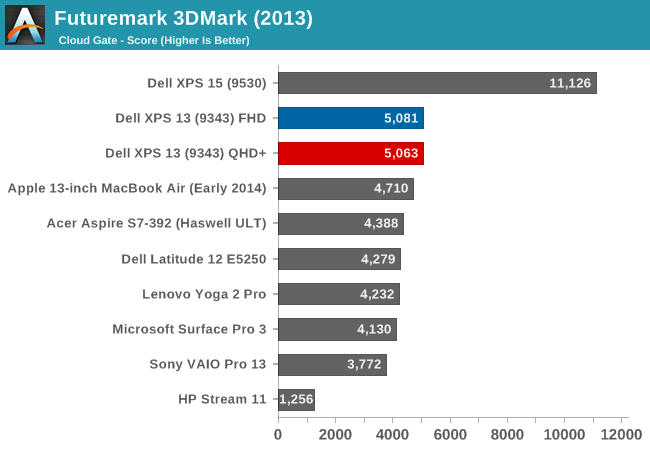
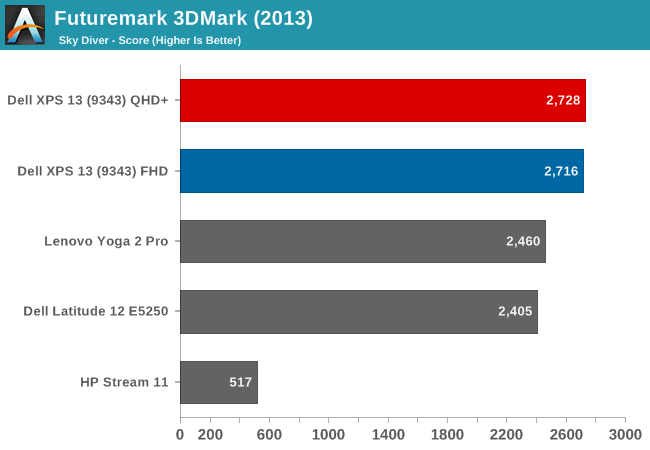

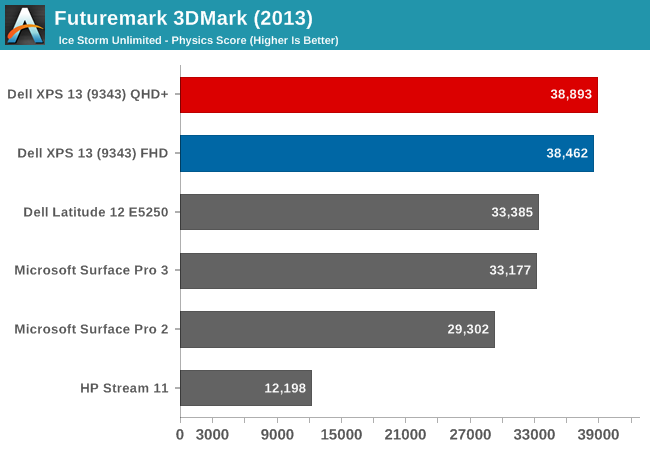
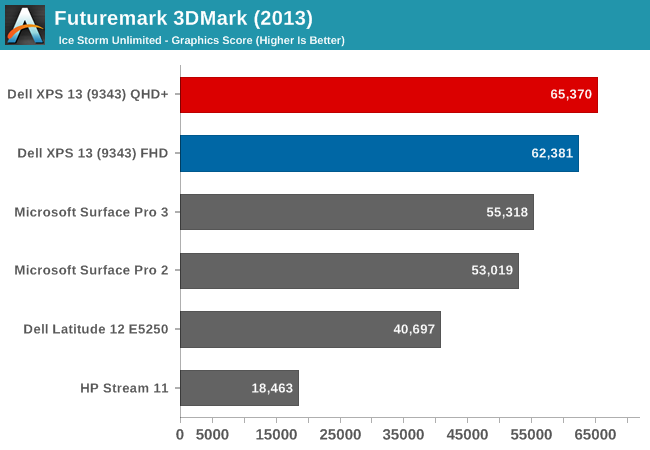
The 3DMark results begin to show the increased GPU performance of the Gen8 graphics. Broadwell-U outperforms all of the Haswell-U parts on all of the tests, and the QHD+ model gave a fraction more performance as well in a few tests.

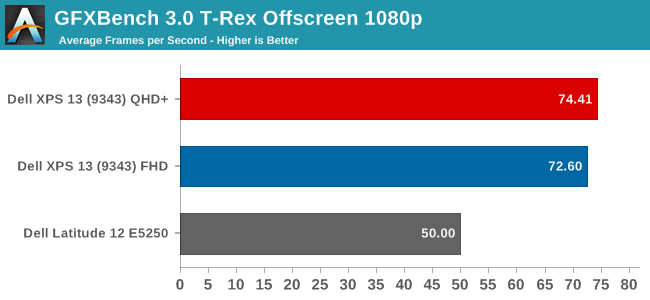

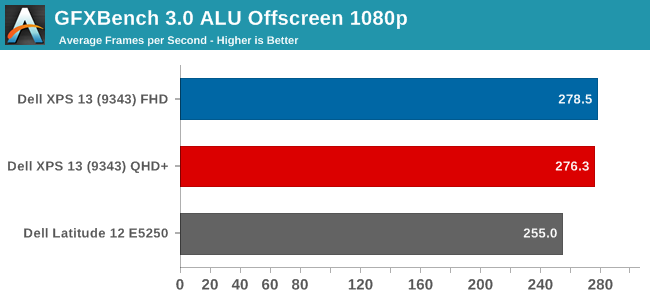
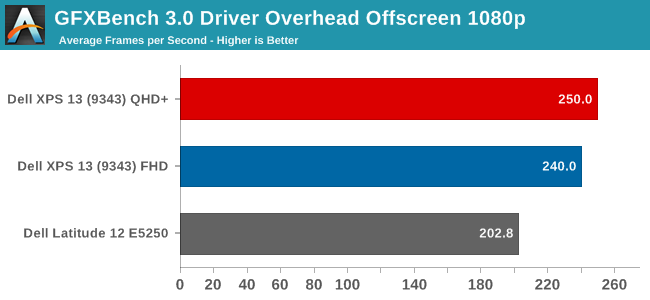
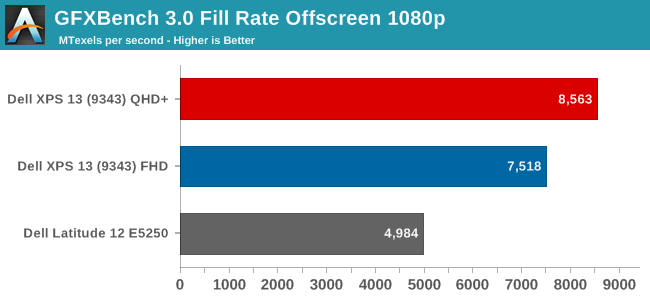
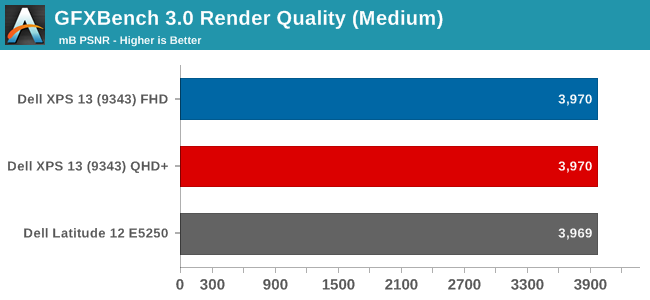
The initial results for the new GPU look pretty good, with the new GPU soundly beating the Haswell-U parts. The HP Stream 11, with just 4 EUs, trails quite far behind. GFXBench is one of our newer benchmark choices for Windows 8, and we will add more data as we get a few more devices to test.
Next, let's look at our gaming benchmarks. Due to the low performance of the integrated GPUs, I just ran our gaming tests at the Value (1366x768 ~Medium) settings.

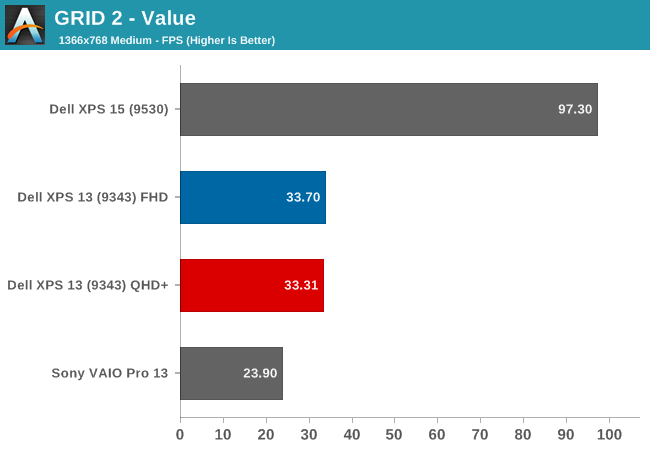

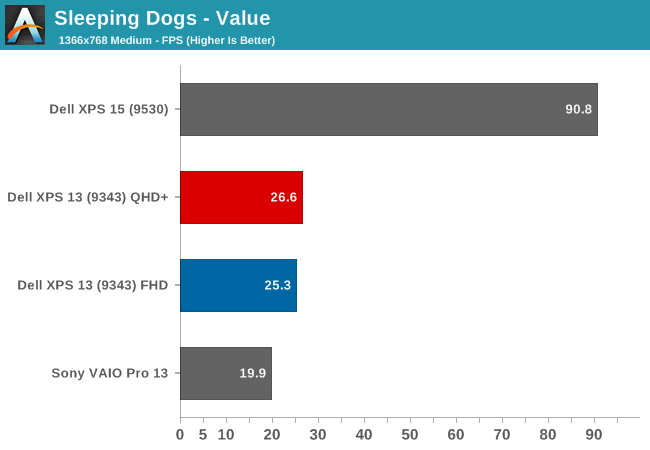
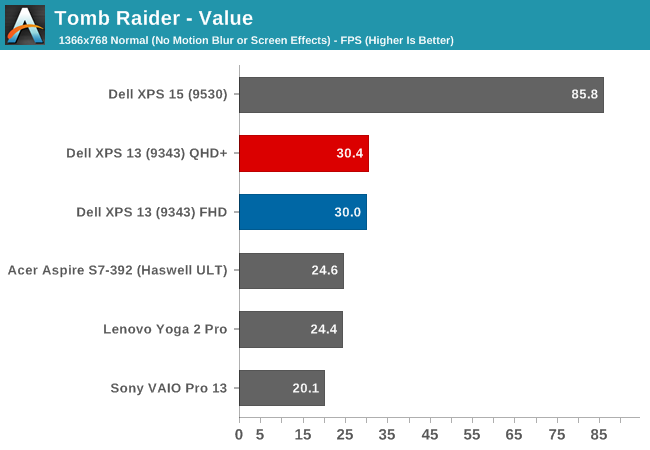
Here we can see once again that the new GPU is certainly stronger, but it is still not quite enough to make any of these games very playable on our Value settings. The Dell XPS 15, with its discrete GPU, carries a huge lead over the integrated GPU offerings. Still, the new Gen8 Graphics with more execution units per processor, as well as a change to the architecture of each execution unit, has made a healthy improvement. The new GPU has only eight EUs per sub-slice now, as compared to ten in Haswell-U, which help in many workloads. Ian has a nice writeup on the changes.
However, our gaming benchmarks are not tested at the lowest possible settings. All of the benchmarks start at 1366x768 with medium settings, so let's drop down another notch.
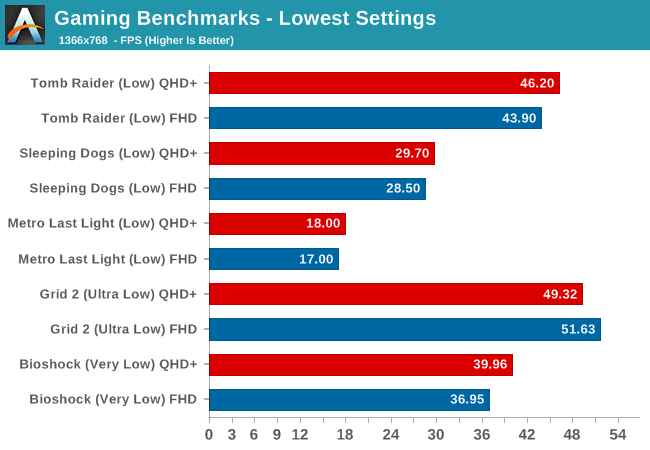
By setting the games to their lowest settings, some of them are now playable. We are still a long ways off of the performance of a discrete GPU, but slowly integrated graphics are improving.
Finally, we have a new gaming benchmark to add to our repertoire. Anand first used the DOTA 2 bench for the Surface Pro 3 review and it will be our go-to benchmark for devices like this without a discrete GPU. Our Value setting will be 1366x768 with all options off, low quality shadows, and medium textures. Midrange will be 1600x900 with all options enabled, medium shadows, and medium textures, and Enthusiast will be 1920x1080 with all options maxed out.
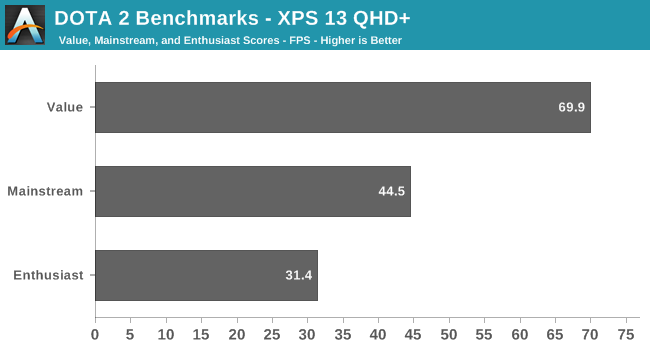
We do not have any other comparison points at the moment, but it is very clear that a game like DOTA 2 is very playable on a device with an integrated GPU. Frame rates, even with good settings, are very reasonable.
So Broadwell has raised the stakes again, but the end result is Intel's Integrated GPU is still not going to let you play AAA titles with good frame rates. Hopefully we can get some good comparisons between Broadwell-U and the AMD APUs in the near future. It will also be interesting to see what happens on the higher wattage Broadwell parts, some of which will contain significantly more EUs.










201 Comments
View All Comments
lefty2 - Friday, February 20, 2015 - link
Yeah, seems like no one buys 35W laptops anymoreGreenMeters - Friday, February 20, 2015 - link
Wish they'd include a discrete GPU option. Not anything particularly powerful, but something like the 840M that's been popular in other thin-and-light "ultrablades". That paired with the more reasonable 1080p screen would enable a lot of games at decent settings, without blowing power/heat budget.Dr_Orgo - Friday, February 20, 2015 - link
I'm not sure the discrete GPU would be a good fit. Clearly it is designed as an ultrabook not as a thin and light gaming notebook. Even if the discrete GPU wouldn't add a huge amount of heat, it would still require sacrifices in thinness and battery life. The 840M wouldn't even provide enough GPU power for gaming enthusiasts, leaving the xps 13 awkwardly in the middle between pure ultrabook and pure gaming laptop.Sureshot324 - Friday, February 20, 2015 - link
13" is too small for me but I'd love a 15" laptop the size of a 13" one. Hopefully this is a trend that catches on in other sizes.pjcamp - Friday, February 20, 2015 - link
It appears to be trivially easy to upgrade the SSD to whatever you want. Several Torx screws and one Phillips and the back comes off, and there is the M2 SSD right before your eyes. I wouldn't let storage be a worry.cump - Friday, February 20, 2015 - link
Perhaps someone could help me out. Looking at this graph the xps13 display should be as bright as a macbook air? I have the FHD 256gb i5 model of the xps13 and a late 2011 11in macbook air. Side by side the screen appears 2x brighter on the mba. Is this a result of defective backlighting, or the antiglare coating, or perhaps I've reading the graphs wrong.jamesau - Friday, February 20, 2015 - link
The Trackpad is currently unusable and needs to be brought to the attention of Dell / Microsoft. It is not really precision and needs dedicated drivers to adjust things like:- Stopping the cursor from jumping when you lift your finger;
- Ability to disable pinch to zoom as this sometimes interferes with two finger scroll and zooms the page in IE / Microsoft instead of scrolling it;
- Ability to customize gestures as you can with Synaptics drivers
MyManFly - Friday, February 20, 2015 - link
Not sure if this was already mentioned, but I think it should be noted in the battery life section that the Macbook Air 13" battery life was while it was running Windows 8, not OSX (The Surface Pro 3 battery life graph shows this).Brett Howse - Saturday, February 21, 2015 - link
Good catch I'll add the OS X battery life to the charts.jordanthoms - Friday, February 20, 2015 - link
Why no 16gb model? Intel restriction? 8gb just isn't enough. I'd like to have the option to pay more and get a faster CPU in it as well.Until they do that I guess I'll be sticking with macbooks...